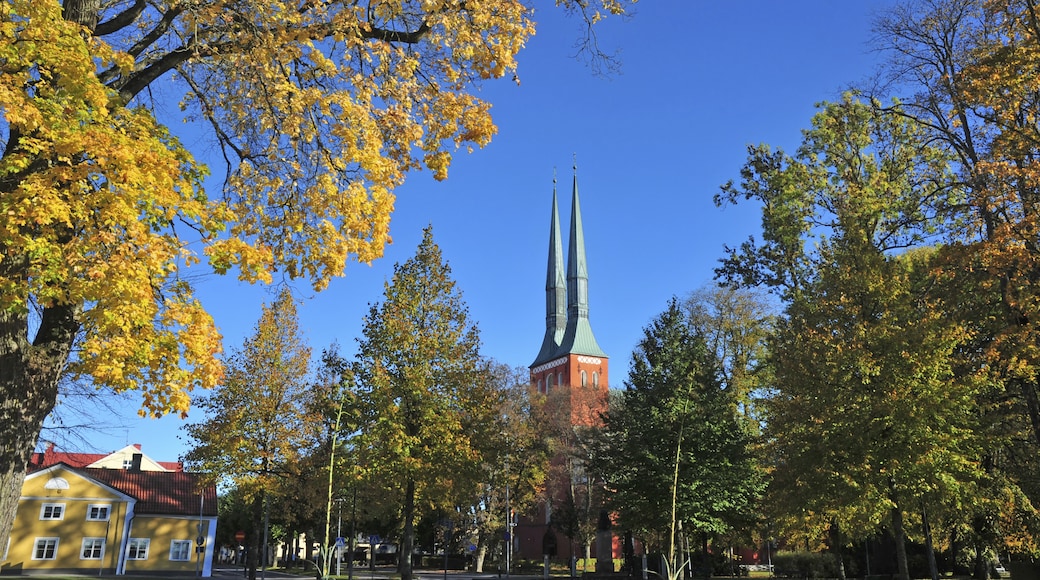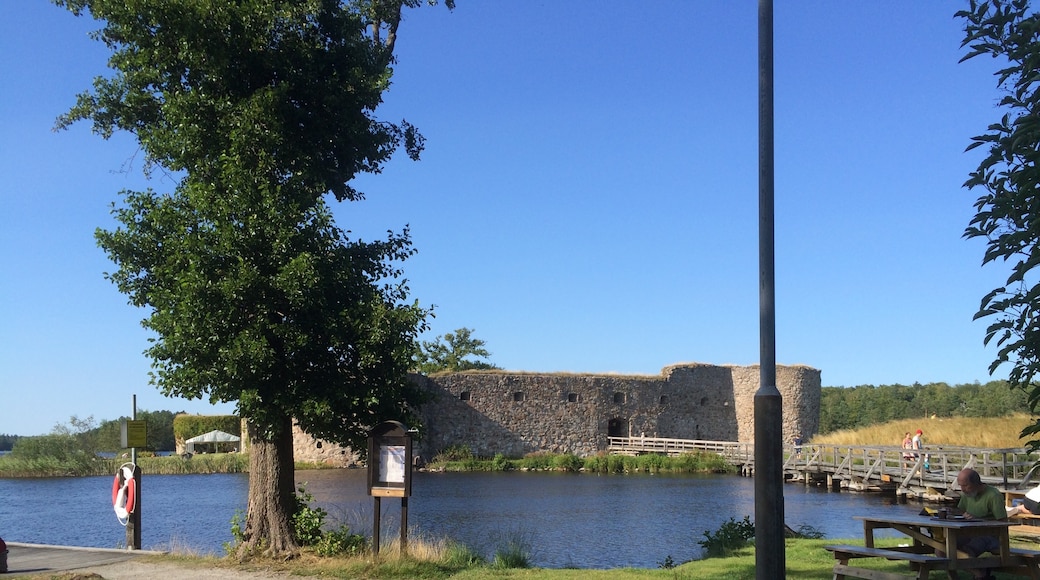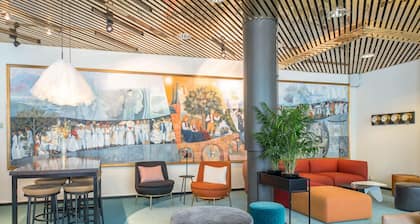Visit Växjö, in Sweden’s southern Småland Province, to see why it has self-proclaimed a superior environmental status. The area has abundant farms, fields and gardens supplying ample produce. Buildings are heated efficiently with minimum emissions. Public transportation is clean.
Spend time at Växjö Lake, conveniently located in the town center. Walk the 3-mile (5-kilometer) boardwalk around the lake.
Other lakes surround the city. Head north to Lake Helga (Helgasjön) where the ruins of Kronoberg Castle sit on its shore. Dating back to 1444, the castle was a stronghold for the Swedes fighting the Danes when this was the border. Take a lake cruise aboard the steamboat S/S Thor, which has been plying Helgasjön for over 130 years. At Little Rock Lake, 30 miles (47 kilometers) north of Växjö, you can zipline from one side of the water to the other, traversing 2.5-miles (4-kilometers).
Back in town, Växjö Cathedral’s spires dominate the area. Step inside the 13th-century building to see a modern altar, pulpit and baptismal font from sculptor Jan Brazda. Look for the Viking rune stone adjacent to the eastern wall.
Renowned botanist Carl Linnaeus received part of his education at a former Växjö high school. Visit the city’s main park of Linnéparken, which has a section for plant species studied by Linnaeus. Sit in the park during warmer months when concerts and children’s shows are often held. Wednesday evenings are popular for live music.
IKEA has a museum at its first store in Älmhult, 39 miles (62 kilometers) away. Växjö lies in a famous glassware region, called the Kingdom of Crystal. Visit the city’s Swedish Glass Museum with over 40,000 glass pieces. Explore glassware further at a glassworks in nearby Nybro, 50 miles (80 kilometers) away, where glassblowers produce incredible pieces. Try your skill at glassblowing and take your creation home as a souvenir.
From Stockholm, Växjö is about 260 miles (420 kilometers) southwest. The trip takes about 5 hours by car, 3 hours by plane or 6.5 hours by bus.










